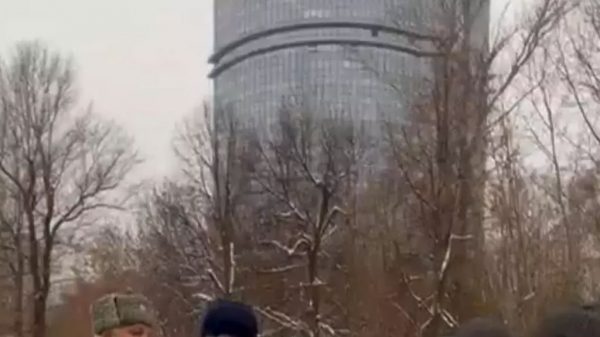Foiled escape: UC Global, CIA and Assange

Binoy Kampmark:
HOWEVER described, the shabby treatment of Julian Assange never ceases to startle. While he continues to suffer in Belmarsh prison awaiting the torments of an interminable legal process, more material is coming out showing the way he was spied upon while staying at the Ecuadorian embassy in London. Of late, the Spanish daily El País has been keeping up its exemplary coverage on the subject, notably on the conduct of the Spanish-based security firm, UC Global SL.
There is a twist in the latest smidgens of information on the alleged bad conduct by that particular company. As luck would have it, UC Global was commissioned by Rommy Vallejo, the chief of Ecuador’s now defunct national intelligence secretariat, SENAIN, to give the London embassy premises a security and technological touch-up.
Vallejo may have sought their services, but seemed blissfully ignorant that he had granted the fox access to the chicken coop. This access involved the installation of hidden microphones throughout the embassy by UC Global at the direction of its owner, David Morales. Morales, it seems, was updating the US Central Intelligence Agency with information about Assange’s meetings with his legal team throughout.
Much of this was revealed in the trial against Assange conducted at the Central Criminal Court in 2020, though the presiding Judge Vanessa Baraitser seemed oddly unmoved by the revelations, as she was by chatter among US intelligence operatives to engineer an abduction or assassination of the WikiLeaks founder.
The link between UC Global and the CIA was the fruit of work between Morales and one of his most notable clients, the casino company, Las Vegas Sands. Morales was responsible for supplying the owner of the company, the late billionaire magnate and Republican donor Sheldon Adelson, with personal security. In the merry-go-round of this field, one of those on Adelson’s personal security detail was a former CIA officer.
On December 20, 2017, Michelle Wallemacq, the head of operations at UC Global, penned a note to two technicians responsible for monitoring security at the embassy. ‘Be on the lookout tomorrow to see what you can get… and make it work.’ The request was related to a scheduled meeting between Assange and Vallejo. The theme of the discussion: to get the Australian publisher out of the embassy, grant him Ecuadorian citizenship and furnish him with a diplomatic passport. This had a heroic, even quixotic quality to it: the grant of a diplomatic passport would not have necessarily passed muster; and the chances of Assange being arrested could hardly be discounted.
Eleven months prior to Morales passing on the tip that scuttled Assange’s escape plans, Morales was already chasing up his staff from one of Adelson’s properties, The Venetian Resort in Las Vegas. One technician received the following: ‘Do you have status reports on the embassy’s computer systems, and networks? I need an inventory of systems and equipment, the guest’s [Assange] phones, and the number of networks.’ He also warned his technicians to be wary ‘that we may be monitored, so everything confidential should be encrypted… Everything is related to the UK subject… The people in control are our friends in the USA.’
On June 12, 2017, Morales, enroute to Washington, DC, requested his contact to activate a File Transfer Protocol server and web portal from their Spanish headquarters. The portal in question: the Ecuadorian Embassy in London. Material began being collected on Assange’s guests, eclectic and of all stripes: journalists, doctors, lawyers, diplomats. Mobile phone data was also hoovered up. After his Washington stop, Morales popped into Las Vegas Sands, where he met his eager ‘American friends’ to reveal the information so far gathered about Assange.
Over this time, it becomes clear, in Morales’s own words, that ‘he had gone over to the dark side’ and that ‘they were working in the Champions League’. Emails sent on September 8 speak of offering ‘our information collection and analysis capability to the American client’. Discussions with a UC Global technician focus on gathering information from the microphones in the embassy. ‘The guest [Assange] has three rooms and uses two quite frequently… We would have all the audio from there except in one room.’
On September 21, it was clear to Morales that they had gotten sufficiently mired in the business of spying on Assange to be wary of any potential surveillance from SENAIN. ‘I would like my whereabouts to be kept confidential, especially my trips to the USA.’ Instructions are distributed to gather data on the embassy’s Wi-Fi network, photos of the interior and furnishings of the embassy, and any data on Assange’s primary visitors, notably any members of his legal team.
The recording of one meeting would prove critical to upending plans to get Assange out of the embassy. Present Assange, his lawyer, now wife Stella Morris, Ecuadorian consul Fidel Narváez and Vallejo. The date for the getaway was slated for December 25, with the plan that Assange leave via one of the ambassador’s cars which would make its way through the Eurotunnel to Switzerland or some designated destination on the continent. ‘It’s very late,’ wrote one of the technicians a few hours after the meeting’s conclusion to Morales. ‘Because it’s so big, I put the file in a shared Dropbox folder. Someone with experience in audio can make it more intelligible.’ While Vallejo could be heard fairly clearly, the voices of Assange and Morris were ‘very muffled’.
Within a matter of hours, Morales had relayed the material to those ‘American friends’ of his, greasing the wheels for proceedings that would culminate in Assange’s expulsion in 2019 and the indictment listing 18 charges, 17 of which are drawn from the Espionage Act of 1917. The plan to leave the embassy was never executed.
There are two significant events that also transpired before Vallejo’s visit to Assange. The first involved an advisor to the Ecuadorian foreign minister who is said to have had information about the plan regarding Assange’s escape. He was assaulted by a number of hooded men at Quito Airport on his return from the United States.
On December 17, 2017 it was time for hooded assailants to turn their attention to the Madrid law offices of Baltasar Garzón and Aitor Martínez. Their target: a computer server. The timing was ominous; both lawyers had just returned from meeting Assange in the London embassy. The intruders proved untraceable by the Spanish police, despite leaving prints.
In hindsight, it does seem remarkable that Vallejo and SENAIN remained ignorant of the rotten apples in UC Global. As things stand, Morales is facing a formal complaint filed by Assange in the Spanish National Court. He is also facing an investigation for alleged breaches of privacy, the violation of attorney-client confidentiality, misappropriation, bribery and money laundering. The presiding magistrate on the case, Santiago Pedraz, has requested the US House Permanent Select Committee on Intelligence to press the CIA in supplying information about the embassy spying.
Even better will be the abandoning of the entire proceeding, the reversal of the extradition order made in June 2022 by then home secretary Priti Patel, and a finding by the UK authorities that the case against Assange is monstrously political, compromised from the start and emptied of legal principle.
CounterPunhc.org, MAY 3. Binoy Kampmark was a Commonwealth Scholar at Selwyn College, Cambridge. He lectures at RMIT University, Melbourne.























Leave a Reply